Hammamet
Hammamet is a meccas of the exotic
- in colour and in lifestyle
In the words of Sophia Loren:
Sex appeal is fifty percent what you've got
and fifty percent what people think you've got.
Hammamet once had it, but it is now a construct of tourism brochures extolling its past.
In that past, it was a place of simplicity and beauty – a place that inspired artists of every sort. It was Hammamet that in 1914 inspired Paul Klee to say:
Colour and I are both one:
I am a painter.
Now, cheap flights and package hotels obscure much of what inspired the location as a tourism mecca – but Hammamet still has its beauty.
Hammamet Marina
We arrived late at night by sea to the Yasmine Marina, and the morning gave a favourable first view.
It is difficult to not have a good first view when one has been rocked to sleep on a gentle harbour swell and awoken to the comforting kling and klang of the rigging and the seagulls call.
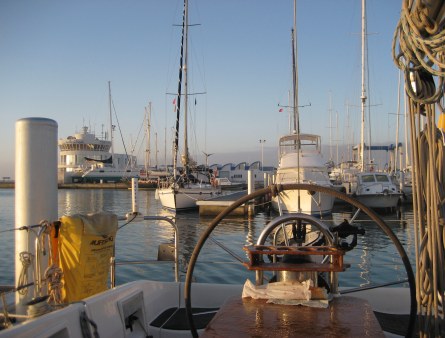
In the 1st century B.C., the original settlement of what is now Hammamet was called Pupput . It was under Roman domination in the 2nd century, then later under Spanish and then Turkish rule.
The Spanish called Hammamet 'La Mahometa.
In 1605, in the midst of what was until then a successful attack on the city, a mysterious call to retreat led to a disorderly withdrawal. This left over 1,200 men stranded on the beaches and unable to get back to their galleons. They were summarily slaughtered en masse by a much smaller contingent of Moors.
It was therefore with some wonder that I saw a Spanish galleon sail past in the marina.
I was not hallucinating. It was not one of the lost fleet, but instead a regular tourism voyage.
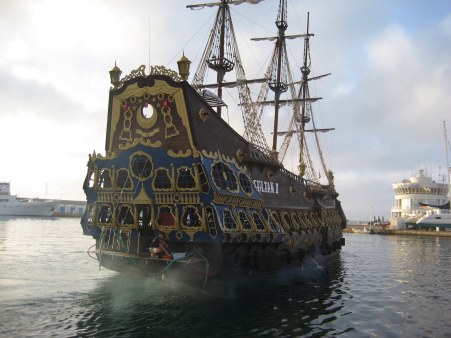
The Yasmine Marina has low fees that attract many 'yachties' to winter their yachts here, and it is worth just walking around and savouring the quality of the vessels in dock.
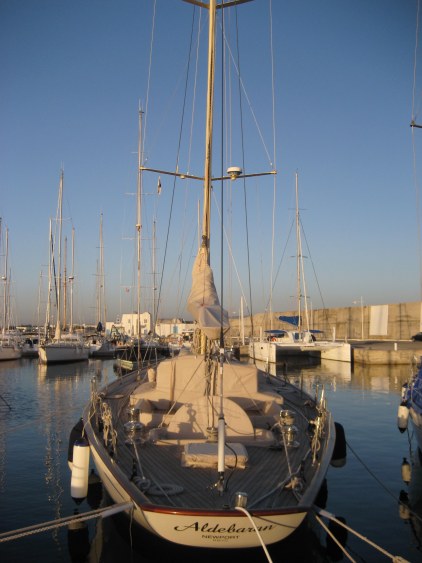
The variety of yachts ranges from ocean-going catamarans through to beautiful classic wooden schooners.
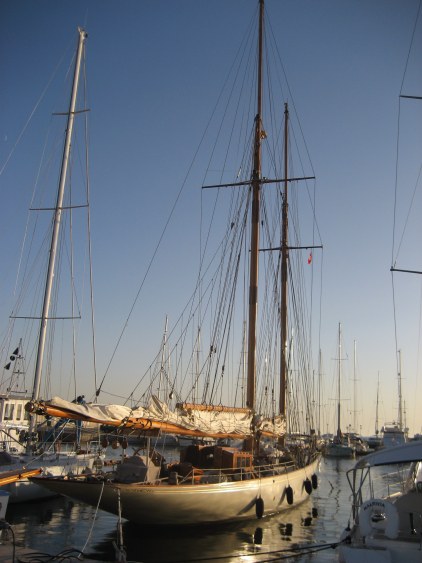
This one was exceptional.
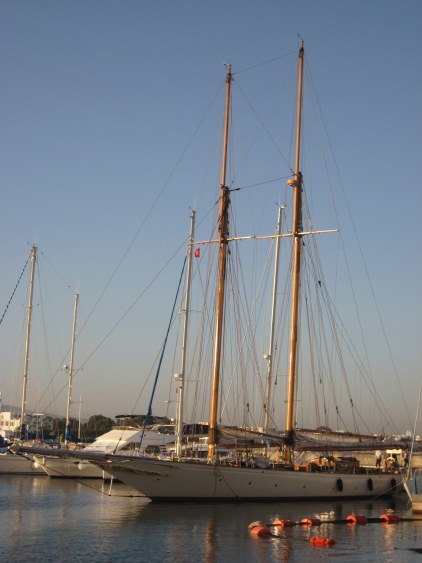
The Yasmine Marina is a luxury development where you can moor your boat close to your condominium.
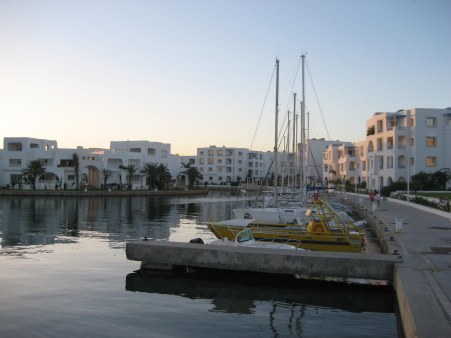
Hammamet harbour park
The marina is also close by the park which flanks the harbour.
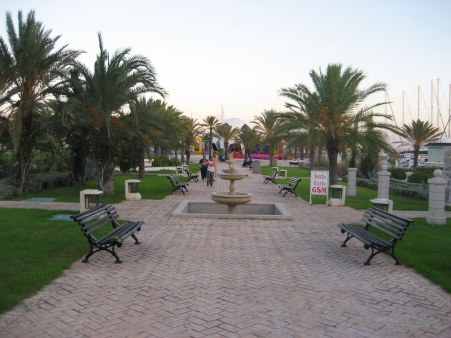
Here, there are plenty of excellent restaurants.
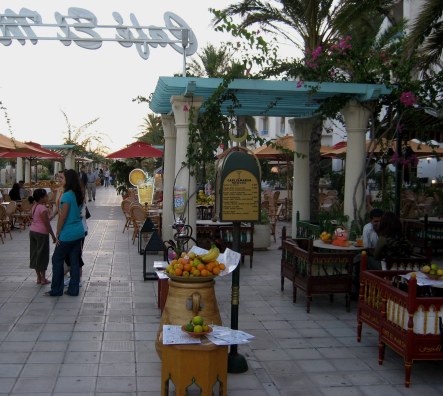
One is a floating restaurant right on the marina.
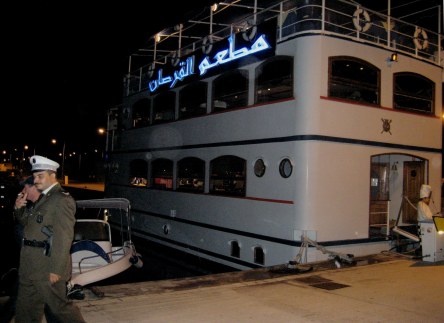
Hammamet - a port city and seafood:
a love affair
On land we were shown all the tempting, fresh seafood.
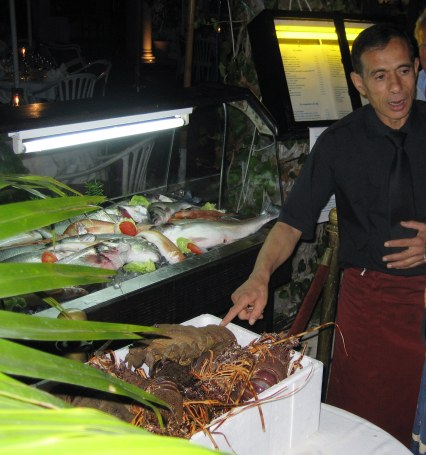
Catering to the tourists there was also good wine.
In Ramadan it is wise to check before heading out,
as not all places will serve alcohol until the end of Ramadan.
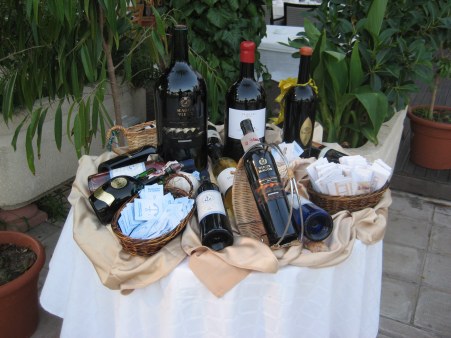
The fish looked a little more substantial than that we caught while sailing towards Hamammet - which I had laughingly photographed.
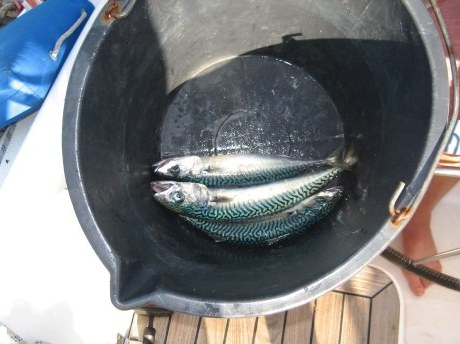
A land-berthed ocean-going liner:
The Kathargo Hotel
Nearby to the marina, the Kathargo hotel has been designed to replicate a great ocean-going liner. The character of a liner can be seen in the rounded balconies….
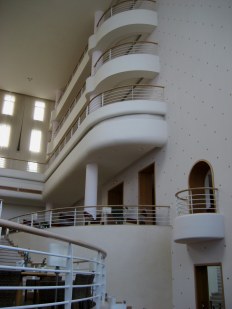
… huge foyer windows...
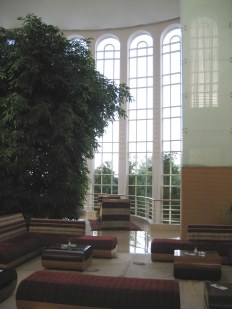
…and all the fittings in keeping with the theme.
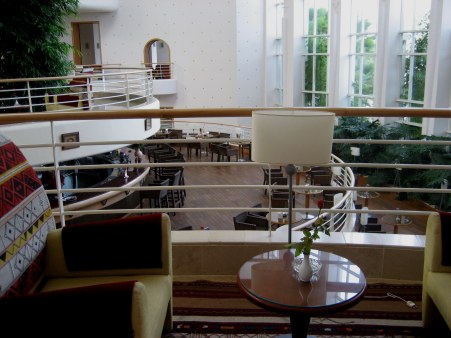
Hammamet Medina
The medina in Hammamet is the only medina of those I have visited where, when separated from my friends, I actually felt quite anxious. The shop-sellers are really forceful. When I was alone I felt more vulnerable than I had ever done in other medinas or souks.
Salesmen grabbed my arm, insisting that I come and see their wares - something I politely resisted, trying to appear calm and unruffled.
On my return, I read that this is a sentiment shared by other travellers – so a word of warning to be equally definite about your route.
But there are many interesting things to find within the shops.
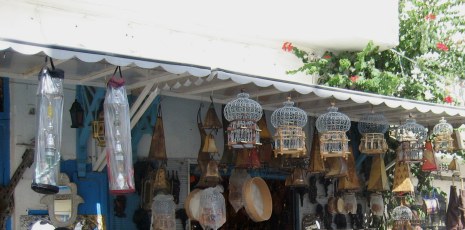
Hammamet Old Town
The narrow routes through the old town are more authentic than the tourist hotels and their enclosed grounds.
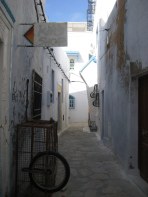
Walking through them…
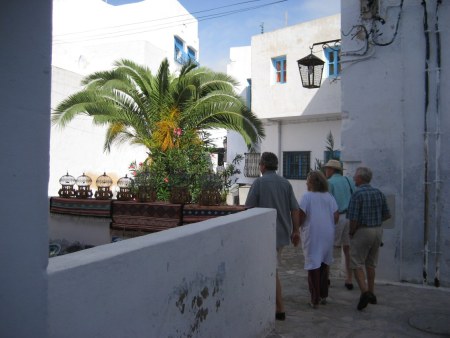
…we came across the Clothing Museum, which is just a modified house with various displays of traditional costumes.
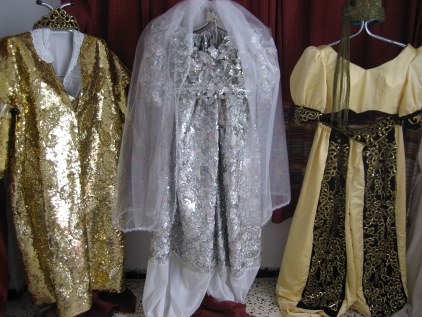
On the roof was the opportunity to gain a good insight
into the rooftop balcony life of the houses of the old town.
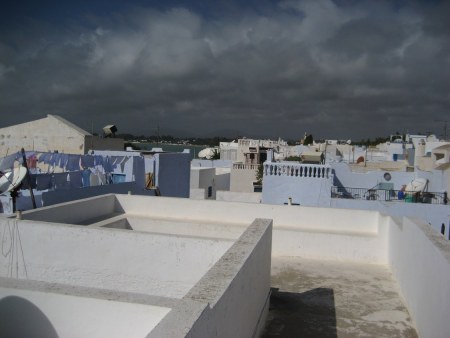
Strolling the streets of Hammamet
If, like me, you are less than charmed by all the tourist 'attractions' that are the antithesis of the real place, then step onto Hammamet’s Avenue de la République and just stroll around.
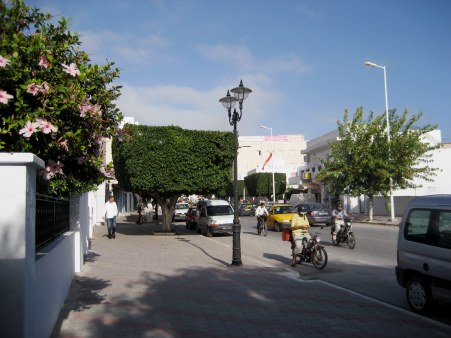
Here, are charming villas resting in the sun.
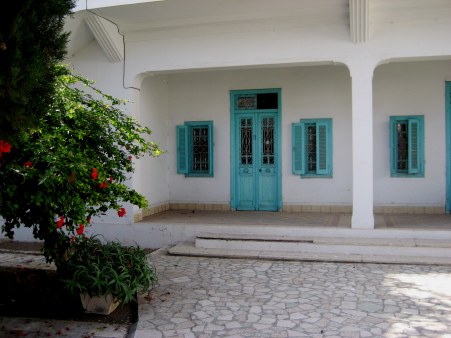
There is a beautifully laid out Post Office.
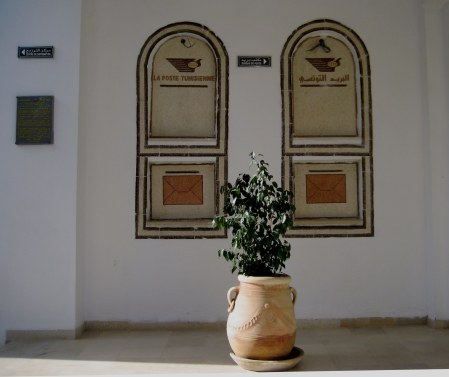
You stroll past traditional mosaic and carved entrances, their doors with patterns in black studs.
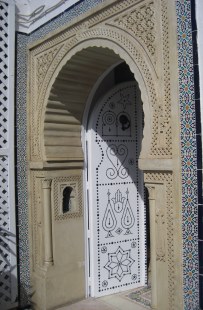
More humble entrances have wooden carved doors.
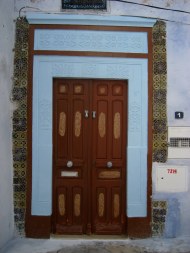
There are traditional, non-tourist cafés …
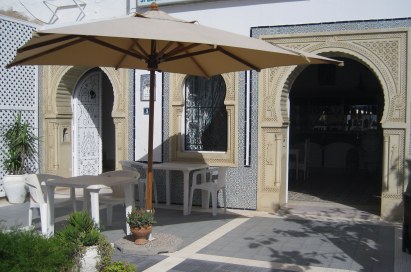
…and restaurants.
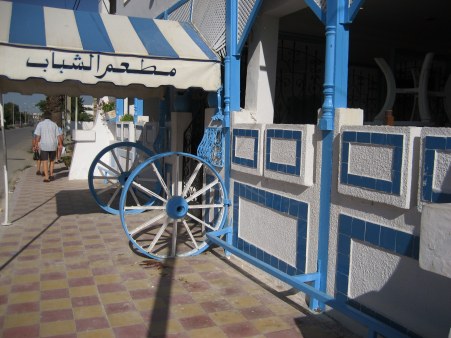
Local shopping in Hammmamet: spices, pickles, green groceries, and flowers
These shops are for locals, selling an array of day-to-day goods, like spices…
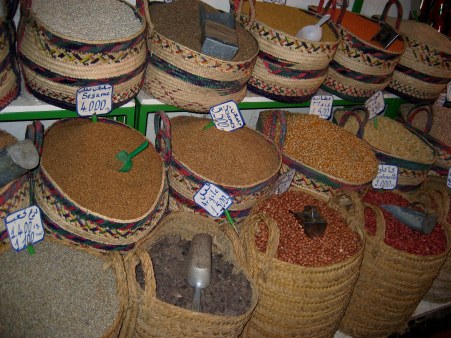
..nuts and lentils…
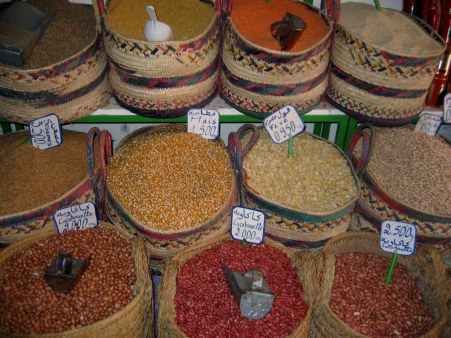
…pickles of all colours and varieties…
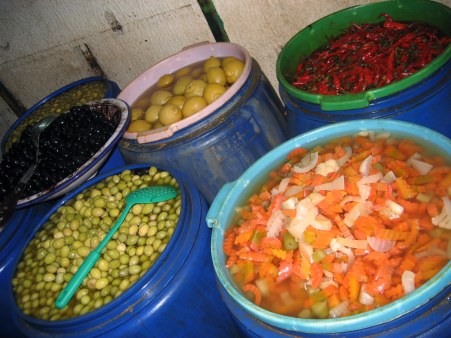
..or dried flowers - the whole shop a mixture of fragrance and colour.
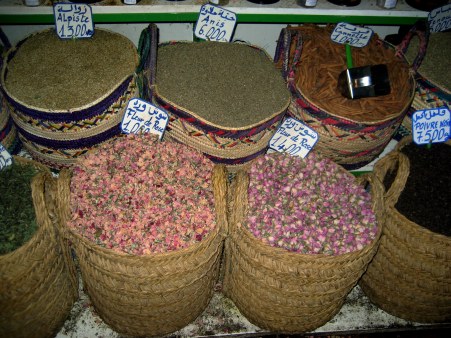
Further along, you could choose from an array of fresh vegetables, or fruits - all beautifully displayed.
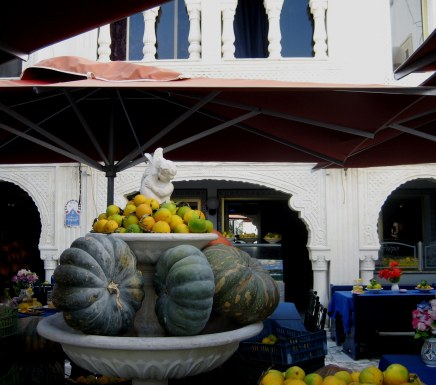
Beachside cafés in Hammamet
The non-tourist cuisine can be savoured in the locals cafés along the beach.
Here, sitting at colourful tiled tables, it is easy to still see some of the simplicity and beauty that in the early 1900s attracted the rich and famous from all over the world to have summer villas here.
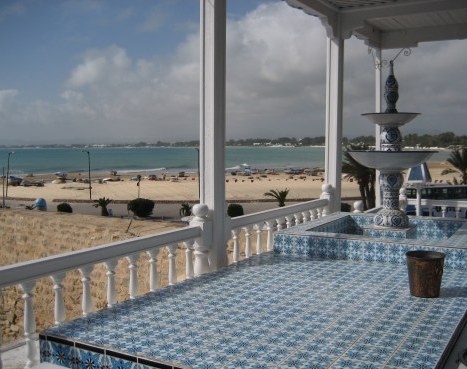
For me, Hammamet is a metaphor for how we come somewhere to enjoy a special beauty – and through over-developing the place into a tourist mecca, destroy what we came to enjoy.
But there is still a lot of charm and loveliness to be enjoyed in Hammamet for, as the famous Persian poet Moslih Eddin Saadi, or Saadi as he is usually known, said:
A traveller without observation
is a bird without wings.
Behind every door there is a story - and a curious traveller seeks them out, the better to know the place.
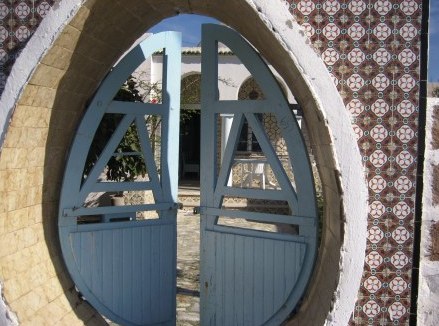
More Tunisia pages here:
Kerkouane





